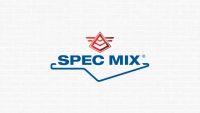EPA Coal Ash Analysis Flawed
Overstates value of coal ash recycling by more than 20 times
Two years after the Kingston, TN coal ash spill, federal action to regulate coal ash dumps is being held up by concerns that stricter standards would depress markets for coal-ash recycling. "Cost-benefit" analysis estimates prepared by the U.S. Environmental Protection Agency (EPA) claim that coal ash recycling is worth more than $23 billion a year, based on the annual life-cycle benefits of avoiding pollution and reducing energy costs. But there's just one problem: That estimate is more than 20 times higher than the $1.15 billion that the U.S. government's own data shows is the correct bottom-line number, according to a review conducted by the independent and nonprofit Environmental Integrity Project (EIP), Earthjustice, and the Stockholm Environment Institute's U.S. Center (based at Tufts University).
The deep flaws in the EPA cost-benefit analysis appear to have escaped scrutiny at the White House Office of Management and Budget (OMB), which required EPA to include a weaker coal-ash proposal favored by utilities and some coal ash recyclers. Common sense and past experience indicate that stricter standards for disposal will work to increase, rather than decrease, recycling. But either way, EPA ought not to be intimidated into adopting weak rules based on grossly inflated values for coal ash recycling, the three groups said.
Presented today by Environmental Integrity Project, Earthjustice, and the Stockholm Environment Institute, the new EIP analysis (available online at www.environmentalintegrity.org) shows that the huge discrepancy is due to several factors, including double counting of pollution reductions that the EPA has already claimed would occur separately under Clean Air Act rules adopted in August 2010, overstated emission levels from cement kilns, and unrealistic assumptions about potential energy savings from reducing energy consumption at cement kilns and gypsum plants. For example:
- About half of the coal-ash recycling benefits claimed by EPA are based on assumptions that substituting fly ash for 15 percent of U.S. cement production would cut fine particle emissions by more than 26,000 metric tons per year. But the EPA's Office of Air and Radiation has estimated that the entire cement kiln industry releases just over 15,000 metric tons per year, and projected emissions already would decline to about 3,500 metric tons by 2013 when separate Clean Air Act standards for that industry take effect.
- EPA estimated that recycling fly ash in cement kilns saves $4.9 billion in energy costs in the analysis prepared for the coal ash rule. But the Agency's Office of Radiation, in analysis developed to support the separate and more far-reaching Clean Air Act standards, estimated total energy costs for the entire industry at no more than $1.7 billion.
Environmental Integrity Project Director Eric Schaeffer said: "Unfortunately, EPA and OMB just got this wrong. The 'regulatory impact analysis' prepared by EPA to support its proposal exaggerates the economic life cycle value of coal ash recycling, which could end up stacking the deck in favor of the weaker regulatory option favored by industry. Somehow, the agency has let itself be distracted by bogus economic arguments, instead of determining how best to protect the public from leaking ash dumps. In any case, coal ash recycling would not stop under the stronger of the two rules at the EPA. Coal combustion waste can be recycled responsibly, help reduce disposal costs and, in some cases, reduce energy or raw materials cost when coal ash is used as a substitute. All evidence suggests that strict regulation of coal ash disposal sites will encourage recycling, as industries seek to avoid the higher disposal costs."
Frank Ackerman, senior economist, Stockholm Environment Institute, said: "We found numerous errors, large and small, in EPA's cost-benefit analysis of the proposed rules. Once we corrected those errors, the strict regulatory option is the clear winner. The only argument for the weaker option is industry's unsubstantiated claim that strict regulation of ash disposal would cause immense, long-lasting harm to the market for ash recycling. In reality, strict regulation of disposal would make recycling more attractive, not less.
Abigail Dillen, staff attorney, Earthjustice, said: "It should come as no surprise that requiring safe landfills for coal ash is less costly than allowing ash dumps to contaminate water in hundreds of communities around the country. What is surprising, in the face of this major public health threat, is that the books are being cooked to accommodate the coal industry."
Why is strong federal action needed? The groups emphasized the following facts:
- About $400 million has been spent so far to clean up the TVA Kingston spill with more than three million tons of spilled ash removed from the site. However, the cleanup is far from complete. Meanwhile, at least 50 similar, unregulated high-hazard dams around the country continue to pose a similar risk of catastrophic failure, and many more ash dumps are currently contaminating groundwater. EPA, EIP, and Earthjustice have documented over 100 dump sites where coal ash has poisoned water supplies.
- EPA's own risk assessments reveal that arsenic levels in drinking water around unlined ash ponds can be high enough to cause cancer in one of 50 people – which is 2,000 times EPA's acceptable risk level. Yet there is evidence that this high cancer risk is substantially underestimated. The leading arsenic experts in the country observe that this risk is actually 17.5 times greater.
- A review of state regulations shows that the majority of states fail to require essential safeguards for coal ash landfills and ponds, including liners, groundwater monitoring, leachate collection, dust controls and financial assurance. In the two years since the disaster in Kingston, little has been done to improve state controls. Only four states in the U.S. require all landfills to be monitored and only six states require all ponds to be monitored for leaks.
About the Author
Patrick Mitchell is a Senior Associate at The Hastings Group and a Public Relations and Communications Consultant.



















